
Deutsch-Chinesische Enzyklopädie, 德汉百科
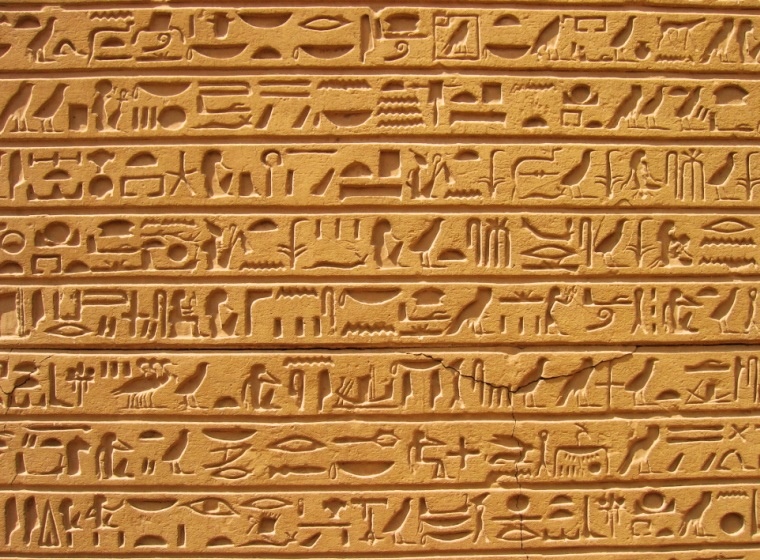
- Frühägyptische Sprache (Sprache der prä- und frühdynastischen Zeit); um 3300 v. Chr. bis um 2700 v. Chr.; wird oft zum Altägyptischen gerechnet
- Altägyptische Sprache (Sprache des Alten Reiches); um 2700 v. Chr. bis um 2200 v. Chr.
- Mittelägyptische Sprache (Sprache des Mittleren Reiches); um 2200 v. Chr. bis um 1500 v. Chr.;
- Neuägyptische Sprache (Sprache des Neuen Reiches); ca. 1500 v. Chr. bis ca. 700 v. Chr.
- Demotisch (Sprache der Spätzeit des Ägyptischen Reiches); um 700 v. Chr. bis um 400 n. Chr.
- Koptisch (Sprache des christlichen Ägyptens); um 300 bis um 1700
 *Mediterranean Sea
*Mediterranean Sea
 Egypt
Egypt

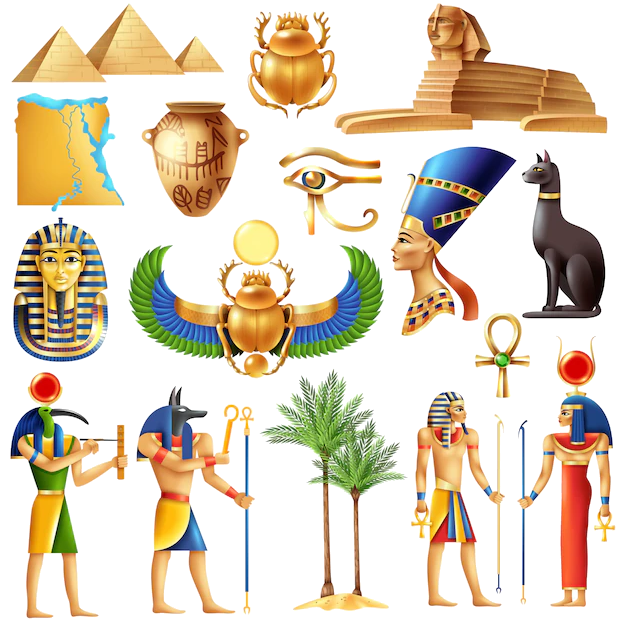 Ancient Egypt
Ancient Egypt

 History
History
 D 3000 - 2500 BC
D 3000 - 2500 BC

 History
History
 B 5000 - 4000 BC
B 5000 - 4000 BC

 History
History
 E 2500 - 2000 BC
E 2500 - 2000 BC

 History
History
 F 2000 - 1500 BC
F 2000 - 1500 BC

 History
History
 G 1500 - 1000 BC
G 1500 - 1000 BC

 History
History
 H 1000 - 500 BC
H 1000 - 500 BC

 History
History
 I 500 - 0 BC
I 500 - 0 BC

 History
History
 J 0 - 500 AD
J 0 - 500 AD

 World Heritage
World Heritage

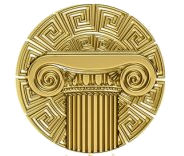 Civilization
Civilization
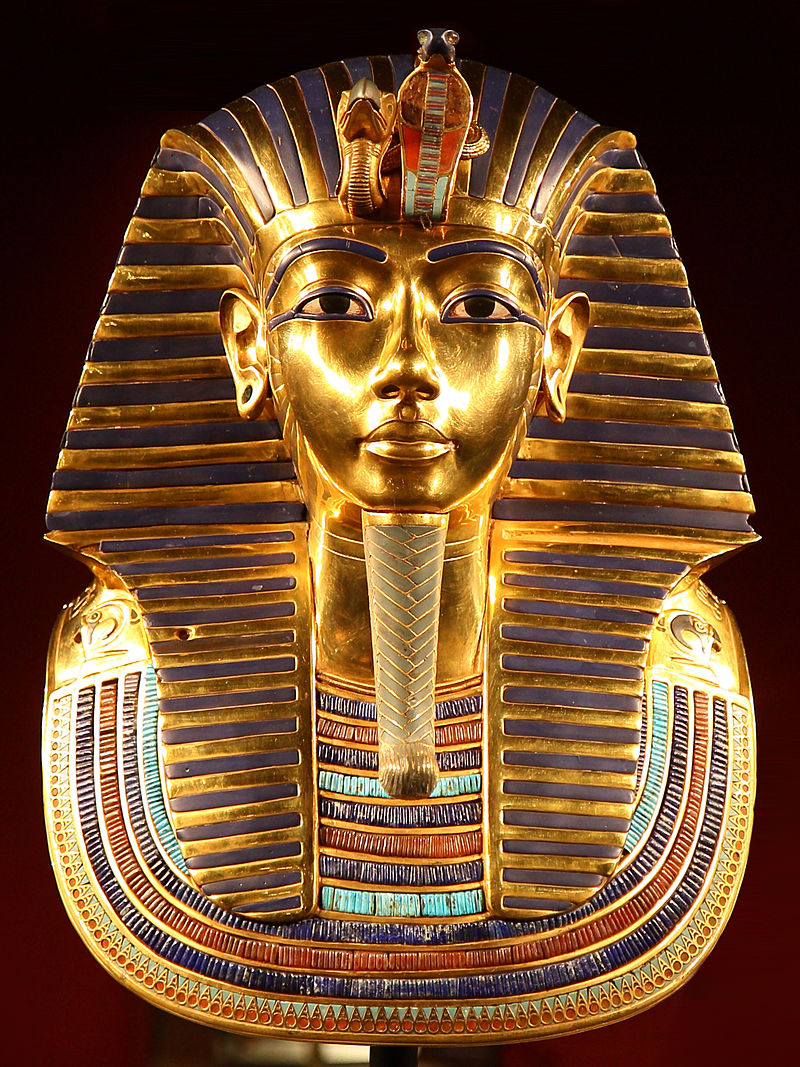
古埃及(阿拉伯语:مصر القديمة)是位于非洲东北部尼罗河中下游地区的一段时间跨度近3000年的古代文明,开始于公元前32世纪左右时美尼斯统一上下埃及建立第一王朝,终止于公元前343年波斯再次征服埃及,虽然之后古埃及文化还有少量延续,但到公元以后的时代,古埃及已经彻底被异族文明所取代,在连象形文字也被人们遗忘后,古代史前社会留给后人的是宏伟的建筑与无数谜团,1798年,拿破仑远征埃及,发现罗塞塔石碑,1822年法国学者商博良解读象形文字成功,埃及学才诞生,古埃及文明才重见天日。直到今日都还不断被挖掘出来。
古埃及的居民是由北非的土著居民和来自西亚的游牧民族塞姆人融合形成的多文化圈。约公元前6000年,因为地球轨道的运转规律性变化、间冰期的高峰过去等客观气候因素,北非茂密的草原开始退缩,人们放弃游牧而开始寻求固定的水源以耕作,即尼罗河河谷一带,公元前4千年后半期,此地逐渐形成国家,至公元前343年为止,共经历前王朝、早王朝、古王国、第一中间期、中王国、第二中间期、新王国、第三中间期、后王朝9个时期31个王朝的统治(参见“古埃及历史”一节)。其中古埃及在十八王朝时(公元前15世纪)达到鼎盛,南部尼罗河河谷地带的上埃及的领域由现在的苏丹到埃塞俄比亚,而北部三角洲地区的下埃及除了现在的埃及和部分利比亚以外,其东部边界越过西奈半岛直达迦南平原。[1]
在社会制度方面,古埃及有自己的文字系统,完善的行政体系和多神信仰的宗教系统,其统治者称为法老,因此古埃及又称为法老时代或法老埃及[2]。古埃及的国土紧密分布在尼罗河周围的狭长地带,是典型的水力帝国[来源请求]。古埃及跟很多文明一样,具有保存遗体的丧葬习俗,透过这些木乃伊的研究能一窥当时人们的日常生活,对古埃及的研究在学术界已经形成一门专门的学科,称为“埃及学”。
古埃及文明的产生和发展同尼罗河密不可分,如古希腊历史学家希罗多德所言:“埃及是尼罗河的赠礼。”古埃及时,尼罗河几乎每年都泛滥,淹没农田,但同时也使被淹没的土地成为肥沃的耕地。尼罗河还为古埃及人提供交通的便利,使人们比较容易的来往于河畔的各个城市之间。古埃及文明之所以可以绵延数千年而不间断,另一个重要的原因是其相对与外部世界隔绝的地理环境,古埃及北面和东面分别是地中海和红海,而西面则是沙漠,南面是一系列大瀑布,只有东北部有一个通道通过西奈半岛通往西亚。这样的地理位置,使外族不容易进入埃及,从而保证古埃及文明的稳定延续。相比较起来,周围相对开放的同时代的两河流域文明则经常被不同民族所主宰,两者对后世所带来的价值观也完全不同。Altes Ägypten ist die allgemeine Bezeichnung für das Land Ägypten im Altertum. Der ägyptische Name lautete Kemet und bedeutet „schwarzes Land“. Kemet bezeichnet das Delta des Nils und geht auf den schwarzen Schlamm zurück, der nach der jährlichen Nilschwemme zurückblieb und eine fruchtbare Ernte garantierte. Eine andere Bezeichnung für das Land des Altertums war Ta meri (T3 mrj), was mit „geliebtes Land“ übersetzt wird.[1]
エジプトは不毛の砂漠地帯であるが、毎年春のナイル川の増水で水に覆われる地域には河土が運ばれて堆積し、農耕や灌漑が可能になる。この氾濫原だけが居住に適しており、主な活動はナイル河畔で行われた。ナイル川の恩恵を受ける地域はケメト(黒い大地)と呼ばれ、ケメトはエジプトそのものを指す言葉として周囲に広がるデシェレト(赤い大地、ナイル川の恩恵を受けない荒地)と対比される概念だった。このケメトの範囲の幅は非常に狭く、ナイル川の本流・支流から数kmの範囲にとどまっていた。しかしながら川の周囲にのみ人が集住しているということは交通においては非常に便利であり、川船を使って国内のどの地域にも素早い移動が可能であった。この利便性は、ナイル河畔に住む人々の交流を盛んにし、統一国家を建国し維持する基盤となった。
ナイル川本流からナイル川の上流は谷合でありナイル川1本だけが流れ、下流はデルタ地帯(ナイル川デルタ)が広がっている。最初に上流地域(上エジプト)と下流地域(下エジプト)[1]でそれぞれ違った文化が発展した後に統一されたため、ファラオ(王)の称号の中に「上下エジプト王」という部分が残り、古代エジプト人も自国のことを「二つの国」と呼んでいた。
毎年のナイル川の氾濫を正確に予測する必要から天文観測が行われ、太陽暦が作られた。太陽とシリウス星が同時に昇る頃、ナイル川は氾濫したという。また、氾濫が収まった後に農地を元通り配分するため、測量術、幾何学、天文学が発達した。ヒエログリフから派生したワディ・エル・ホル文字と原シナイ文字(原カナン文字)は世界の殆どのアルファベットの起源となったされる。
エジプト文明と並ぶ最初期における農耕文明の一つであるメソポタミア文明が、民族移動の交差点にあたり終始異民族の侵入を被り支配民族が代わったのと比べ、地理的に孤立した位置にあったエジプトは比較的安定しており、部族社会が城壁を廻らせて成立する都市国家の痕跡は今の所発見されていない。
Ancient Egypt was a civilization of ancient North Africa, concentrated along the lower reaches of the Nile River in the place that is now the country Egypt. Ancient Egyptian civilization followed prehistoric Egypt and coalesced around 3100 BC (according to conventional Egyptian chronology)[1] with the political unification of Upper and Lower Egypt under Menes (often identified with Narmer).[2] The history of ancient Egypt occurred as a series of stable kingdoms, separated by periods of relative instability known as Intermediate Periods: the Old Kingdom of the Early Bronze Age, the Middle Kingdom of the Middle Bronze Age and the New Kingdom of the Late Bronze Age.
Egypt reached the pinnacle of its power in the New Kingdom, ruling much of Nubia and a sizable portion of the Near East, after which it entered a period of slow decline. During the course of its history Egypt was invaded or conquered by a number of foreign powers, including the Hyksos, the Libyans, the Nubians, the Assyrians, the Achaemenid Persians, and the Macedonians under the command of Alexander the Great. The Greek Ptolemaic Kingdom, formed in the aftermath of Alexander's death, ruled Egypt until 30 BC, when, under Cleopatra, it fell to the Roman Empire and became a Roman province.[3]
The success of ancient Egyptian civilization came partly from its ability to adapt to the conditions of the Nile River valley for agriculture. The predictable flooding and controlled irrigation of the fertile valley produced surplus crops, which supported a more dense population, and social development and culture. With resources to spare, the administration sponsored mineral exploitation of the valley and surrounding desert regions, the early development of an independent writing system, the organization of collective construction and agricultural projects, trade with surrounding regions, and a military intended to assert Egyptian dominance. Motivating and organizing these activities was a bureaucracy of elite scribes, religious leaders, and administrators under the control of a pharaoh, who ensured the cooperation and unity of the Egyptian people in the context of an elaborate system of religious beliefs.[4][5]
The many achievements of the ancient Egyptians include the quarrying, surveying and construction techniques that supported the building of monumental pyramids, temples, and obelisks; a system of mathematics, a practical and effective system of medicine, irrigation systems and agricultural production techniques, the first known planked boats,[6] Egyptian faience and glass technology, new forms of literature, and the earliest known peace treaty, made with the Hittites.[7] Ancient Egypt has left a lasting legacy. Its art and architecture were widely copied, and its antiquities carried off to far corners of the world. Its monumental ruins have inspired the imaginations of travelers and writers for centuries. A new-found respect for antiquities and excavations in the early modern period by Europeans and Egyptians led to the scientific investigation of Egyptian civilization and a greater appreciation of its cultural legacy.[8]
L'Égypte antique est une ancienne civilisation du nord-est de l'Afrique, concentrée le long du cours inférieur du Nil, dans ce qui constitue aujourd'hui l'Égypte.
La civilisation de l'Égypte antique prend forme autour de -31501 avec l'unification politique de la Haute-Égypte au sud et de la Basse-Égypte au nord sous le règne du premier roi et se développe sur plus de trois millénaires2. Son histoire est parsemée d'une série de périodes stables politiquement, entrecoupées de plusieurs périodes intermédiaires, plus troublées. L'Égypte antique atteint son apogée sous le Nouvel Empire puis entre dans une période de lent déclin. Le pays subit les assauts répétés de puissances étrangères dans cette période tardive et le règne des pharaons prend officiellement fin en -30 où l'Empire romain conquiert l'Égypte pour en faire une province3.
Le succès de la civilisation égyptienne antique découle en partie de sa capacité à s'adapter aux conditions de la vallée du Nil. L'inondation prévisible du fleuve et le contrôle de l'irrigation de la vallée produit des récoltes excédentaires qui alimentent le développement social et culturel du pays. Ce surplus agricole donne à l'administration les moyens de financer l'exploitation minière de la vallée et des régions voisines du désert. Le développement rapide d'un système d'écriture indépendant, l'organisation de constructions collectives et de projets agricoles, les relations commerciales avec les pays voisins et une armée solide permettent à l'Égypte d'affirmer sa domination sur la région. Toutes ces activités sont organisées par une bureaucratie de scribes, de dirigeants religieux et d'administrateurs sous le contrôle du pharaon qui assure l'unité du peuple égyptien dans le cadre d'un système complexe de croyances religieuses4,5.
Les nombreuses réalisations des Égyptiens de l'Antiquité comprennent l'extraction minière, l'arpentage et les techniques de construction qui facilitent la construction de pyramides monumentales, de temples et d'obélisques. On compte également à leur crédit le développement des mathématiques, de la médecine, de l'irrigation et de la production agricole, la construction des premiers navires connus, la faïence égyptienne, de nouvelles formes de littérature6. Du rassemblement des tribus primitives qui créent le premier royaume pharaonique jusqu'à son absorption au Ier siècle av. J.-C., l'Égypte antique est le théâtre d'évènements majeurs qui influencent assurément la culture et l'imaginaire des peuples lui ayant succédé. Son art et son architecture sont largement copiés et ses antiquités sont disséminées aux quatre coins du monde. Un regain d'intérêt pour la période antique au début de l'époque moderne conduit à de nombreuses investigations scientifiques de la civilisation égyptienne, notamment par des fouilles, et à une meilleure appréciation de son héritage culturel, pour l'Égypte et le monde7.
Con Antico Egitto si intende la civiltà sviluppatasi lungo la Valle del Nilo a partire dalle cateratte, a sud e al confine con l’attuale Sudan[N 1], alla foce, al delta, nel Mar Mediterraneo, per un’estensione complessiva di circa 1000 km. Benché il territorio fosse molto più vasto, comprendendo gran parte anche del Deserto Libico-Nubiano, gli insediamenti umani, fin dai tempi più remoti, si svilupparono solo nella stretta fascia verdeggiante a ridosso delle rive del fiume larga, in alcuni punti anche solo poche centinaia di metri.
Fin dal 3500 a.C., di pari passo con l'avvento dell'agricoltura, in particolare la coltivazione del grano, dell’orzo e del lino, si ha contezza di insediamenti umani specie lungo le rive del Nilo[1]. Le piene annuali del fiume, infatti, favorivano la coltivazione anche con più raccolti annui grazie ai sedimenti, particolarmente fertili (Limo), che il fiume, nel suo ritirarsi, lasciava sul terreno. Ciò comportò, fin dai tempi più remoti, conseguentemente, la necessità di controllare, incanalare e conservare le acque onde garantire il costante approvvigionamento, vuoi per il sostentamento umano, vuoi per quello del bestiame e delle piantagioni.
Non è da escludersi che proprio la complessa necessità di dover far fronte alle esigenze connesse con la gestione dell’agricoltura, e segnatamente, delle acque nilotiche, abbia favorito proprio il formarsi delle prime comunità su territori parziali tuttavia ben differenziati e politicamente e geograficamente individuabili. Tali entità, normalmente individuate con il termine greco di nomoi, ben presto si costituirono in due distinte entità geo-politiche più complesse. Tale l’importanza del fiume Nilo, che attraversava tutto il paese, che anche le denominazioni di tali due macro-aree fanno riferimento al fiume: considerando che le sorgenti del Nilo, benché all'epoca non note, dovevano essere a sud, tale sarà l’Alto Egitto, mentre, di converso, l’area del delta, verso il Mediterraneo, sarà indicato come Basso Egitto[2].
Varie culture si susseguirono nella valle nilotica fin dal 3900 a.C. in quello che viene definito Periodo Predinastico. Un’entità embrionale di Stato può riconoscersi, invece, a partire dal 3200-3100 a.C. con la I dinastia e l’unificazione delle due macro-aree che resteranno, tuttavia, sempre distinte tanto che per tutta la storia del Paese i regnanti annovereranno tra i loro titoli quello di Signore delle Due Terre.
La storia dell’Antico Egitto copre, complessivamente, circa 4000 anni, dal 3900 a.C. (con il Periodo Predinastico) al 342 a.C. (con il Periodo tardo) e comprende, dal 3200 a.C., trenta dinastie regnanti riconosciute archeo-storicamente. A queste debbono esserne aggiunte altre, dette di comodo, giacché riferite, di fatto, non a governi autoctoni, o comunque derivanti dal Paese, bensì frutto di invasioni o di raggiungimento del potere da parte di regnanti stranieri. Avremo perciò una XXXI dinastia, costituita da re persiani, una XXXII dinastia macedone, che annovera un solo sovrano, Alessandro Magno, e una XXXIII dinastia, meglio nota come Dinastia tolemaica, nata dallo smembramento dell’impero di Alessandro.
Anche molti imperatori romani, occupato l’Egitto, non disdegnarono di assumere il titolo di faraone con titolatura geroglifica.
El Antiguo Egipto fue una civilización que se originó a lo largo del cauce medio y bajo del río Nilo, y que alcanza tres épocas de esplendor faraónico en los periodos denominados Imperio Antiguo, Imperio Medio, e Imperio Nuevo. Alcanzaba desde el delta del Nilo en el norte, hasta Elefantina, en la primera catarata del Nilo, en el sur, llegando a tener influencia desde el Éufrates hasta Jebel Barkal, en la cuarta catarata del Nilo, en épocas de máxima expansión. Su territorio también abarcó, en distintos periodos, el desierto oriental y la línea costera del mar Rojo, la península del Sinaí, y un gran territorio occidental dominando los dispersos oasis. Históricamente, fue dividido en Alto y Bajo Egipto, al sur y al norte respectivamente.
La civilización egipcia se desarrolló durante más de 3000 años. Comenzó con la unificación de algunas ciudades del valle del Nilo,1 alrededor del año 3150 a. C.,2 y convencionalmente se da por terminado en el año 31 a. C., cuando el Imperio romano conquistó y absorbió el Egipto ptolemaico, que desaparece como Estado.3 Este acontecimiento no representó el primer período de dominación extranjera, pero fue el que condujo a una transformación gradual en la vida política y religiosa del valle del Nilo, marcando el final del desarrollo independiente de su cultura. Su identidad cultural había comenzado a diluirse paulatinamente tras las conquistas de los reyes de Babilonia (siglo VI a. C.) y Macedonia (siglo IV a. C.), desapareciendo su religión con la llegada del cristianismo, en la época de Justiniano I, cuando en 535 fue prohibido el culto a la diosa Isis, en el templo de File.
Egipto tiene una combinación única de características geográficas, situada en el África nororiental y confinada por Libia, Sudán, el mar Rojo y el mar Mediterráneo. El río Nilo fue la clave para el éxito de la civilización egipcia, ya que éste permitía el aprovechamiento de los recursos y ofrecía una significativa ventaja sobre otros oponentes: el légamo fértil depositado a lo largo de los bancos del Nilo tras las inundaciones anuales significó para los egipcios el practicar una forma de agricultura menos laboriosa que en otras zonas, liberando a la población para dedicar más tiempo y recursos al desarrollo cultural, tecnológico y artístico.
La vida se ordenaba en torno al desarrollo de un sistema de escritura y de una literatura independientes, así como en un cuidadoso control estatal sobre los recursos naturales y humanos, caracterizado sobre todo por la irrigación de la fértil cuenca del Nilo y la explotación minera del valle y de las regiones desérticas circundantes, la organización de proyectos colectivos como las grandes obras públicas, el comercio con las regiones vecinas de África del este y central y con las del Mediterráneo oriental y, finalmente, por un poderío militar capaz de derrotar a cualquier enemigo, y que mantuvieron una hegemonía imperial y la dominación territorial de civilizaciones vecinas en diversos períodos. La motivación y la organización de estas actividades estaba encomendada a una burocracia de élite sociopolítica y económica, los escribas, bajo el control del Faraón, un personaje semidivino, perteneciente a una sucesión de dinastías, que garantizaba la cooperación y la unidad del pueblo egipcio en el contexto de un elaborado sistema de creencias religiosas.45
Los muchos logros de los egipcios incluyen la extracción minera, la topografía y las técnicas de construcción que facilitaron el levantamiento de monumentales pirámides, templos y obeliscos, unos procedimientos matemáticos, una práctica médica eficaz, métodos de riego y técnicas de producción agrícola, las primeras naves conocidas,6 la tecnología del vidrio y de la fayenza, las nuevas formas de la literatura y el tratado de paz más antiguo conocido, firmado con los hititas.7 Egipto dejó un legado duradero, su arte y arquitectura fueron ampliamente copiados, y sus antigüedades se llevaron a los rincones más lejanos del mundo. Sus ruinas monumentales han inspirado la imaginación de los viajeros y escritores desde hace siglos. Un nuevo respeto por las antigüedades y excavaciones en la época moderna han llevado a la investigación científica de la civilización egipcia y a una mayor apreciación de su legado cultural.8
Древний Еги́пет (от др.-греч. Αἴγυπτος и лат. Aegyptus), самоназвание Та-кемет, Та-мери, Та-уи и др. (транслит. егип. tA-kmt, tA-mrj, tA-wy), Ке́ми (копт. Ⲭⲏⲙⲓ) — название исторического региона и культуры значительной цивилизации Древнего мира, существовавшей на северо-востоке Африки вдоль нижнего течения реки Нил. История Древнего Египта составляет около 40 веков и подразделяется исследователями на додинастический период (относится к финалу доисторического периода, краткий обзор которого также приводится в статье), династический период (основной этап существования египетской цивилизации протяжённостью около 27 веков), эллинистический период (синтез с греко-македонской культурой под властью династии Птолемеев), римский период (в составе древнеримского государства, как одна из важнейших провинций Римской империи). Временные границы существования древнеегипетской культуры, принятые исследователями, охватывают период с середины IV тысячелетия до н. э. до IV век н. э. Византийско-коптский период (в составе Византии) хотя и относится уже к раннему средневековью, при этом также иногда рассматривается в рамках изучения Древнего Египта. Временные границы начинаются с IV века и заканчиваются арабским завоеванием в VII веке.
Возвышение древнеегипетской цивилизации в большой степени было результатом её способности адаптироваться к условиям речной долины и дельты Нила. Регулярные ежегодные разливы, удобряющие почву плодородным илом, а также организация ирригационной системы земледелия позволяли производить зерновые культуры в избыточном количестве, обеспечивавшем социальное и культурное развитие. Концентрация людских и материальных ресурсов в руках администрации способствовала созданию и поддержанию сложной сети каналов, появлению регулярной армии и расширению торговли, а с постепенным развитием горнодобывающего дела, полевой геодезии и строительных технологий давала возможность организовывать коллективные возведения монументальных сооружений. Принуждающей и организующей силой в Древнем Египте был хорошо развитый государственный аппарат, состоявший из жрецов, писцов и администраторов во главе с фараоном, который часто обожествлялся в сложной системе религиозных верований с развитым культом погребальных обрядов.
Древний Египет оставил огромное культурное наследие для мировой цивилизации, произведения его искусства ещё в древности вывозились в различные уголки мира и широко копировались мастерами других стран. Своеобразные архитектурные формы — величественные пирамиды, храмы, дворцы и обелиски вдохновляли воображение путешественников и исследователей в течение многих столетий. Египетскими мастерами создавались прекрасные настенные росписи и статуи, были освоены способы производства стекла и фаянса, поэтами и писателями созданы новые формы в литературе. В числе научных достижений древних египтян было создание оригинальной системы письма, математика, практическая медицина, астрономические наблюдения и возникший на их основе календарь. Интерес к памятникам, артефактам и археологическим раскопкам в Древнем Египте, возникший на рубеже XVIII—XIX веков, привёл к созданию науки египтологии и возникновению направлений искусства (египтомания, египтизирующий стиль).

Als Andenzivilisation, auch Altperu[1], werden komplexe Gesellschaften (Zivilisationen) bezeichnet, die sich im Andenraum einschließlich der Pazifikküste im Westen Südamerikas vor der Ankunft der Europäer entwickelten. Neben Peru umfasst dieser Kulturraum insbesondere Kolumbien, Ecuador, Bolivien, Chile und Argentinien. Der Andenraum mit seiner trockenen Pazifikküste, den östlich gelegenen feuchtwarmen Gebieten des Amazonasregenwaldes und den hohen beschneiten Gipfel der Anden bot mit seiner sich zwischen 2.500 und 3.500 m erstreckenden Sierra günstige landwirtschaftliche Bedingungen (gleichmäßiges Klima, fruchtbarer Boden) und begünstigte so die Besiedlung des Andenraums. Ähnliches galt für den Altiplano, ein abflussloses steppenartiges Gebiet zwischen 3.000 und 4.500 m mit dem Titicacasee. Wann die ersten Menschen nach Südamerika einwanderten, ist unbekannt. Einige Forscher nehmen an, dass der Andenraum über die Landenge von Panama besiedelt wurde.
安第斯文明是指位于哥伦比亚南部的安地斯山脉、秘鲁沿海沙漠以及智利和阿根廷西北部的由多种文化和民族组成的文明。秘鲁的小北文明是美洲已知最古老的文明,它的历史可追溯到公元前3200年。



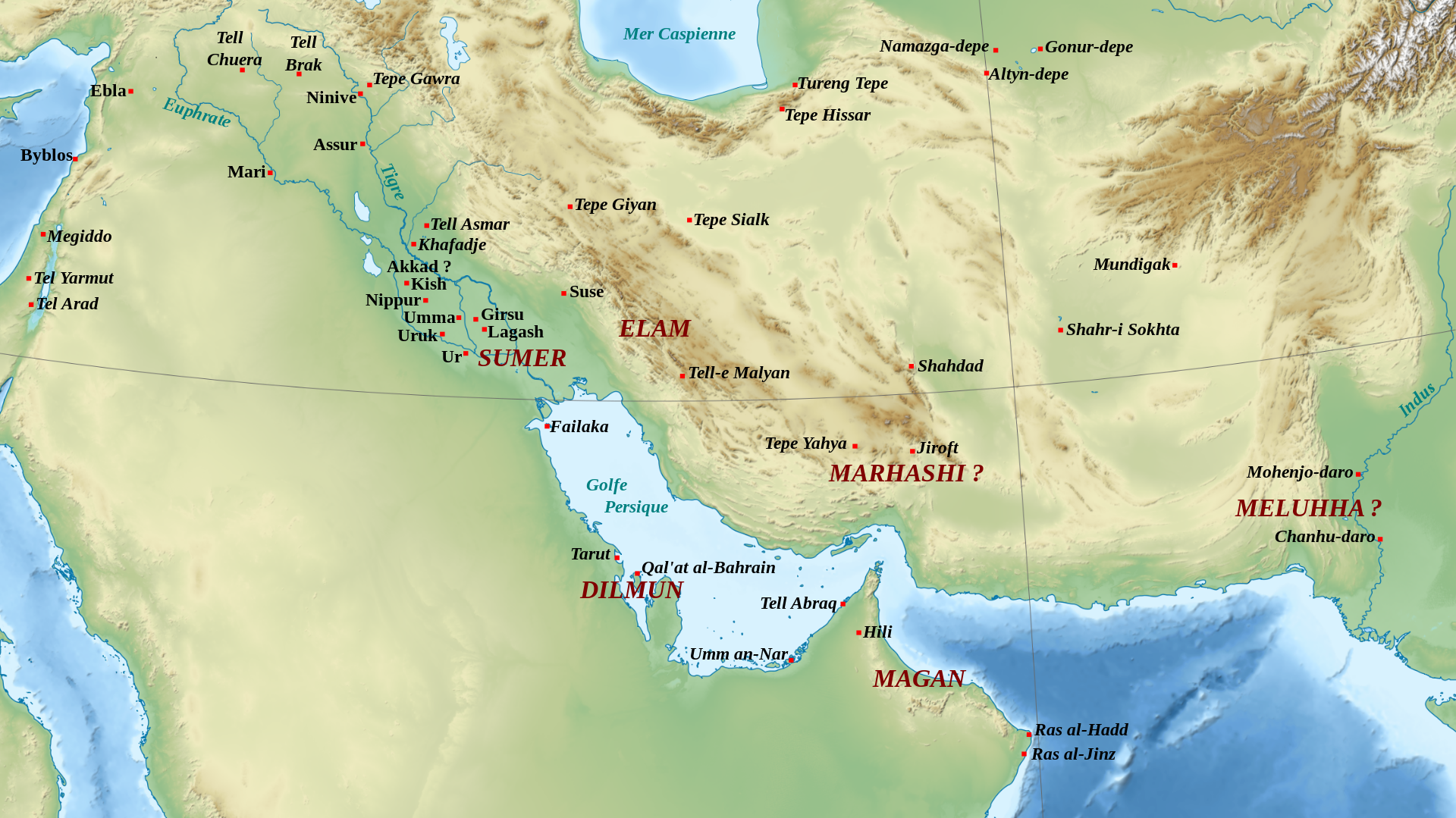
大约在公元前3150年,上下埃及的统一标志着古埃及早王朝时期的开始。早王朝时期包括了第一王朝与第二王朝,时间由前王朝时期直至公元前2686年,又或者直至古王国时期。在第一王朝时期,埃及的首都由阿拜多斯迁至孟斐斯,[1]统治埃及的君主拥有神一般的权力,其统治范围由尼罗河三角洲至阿斯旺尼罗河第一瀑布。[2]阿拜多斯仍然是埃及南部宗教崇拜的中心。古埃及文明的许多成就,如艺术、建筑及宗教的各方面都在这段时期成形。
在上下埃及统一之前,埃及的各个城市都有自主权。在早王朝时期,以及后来的许多时间,埃及均被称为“两地”(Two Lands)。法老建立国家的行政及委任王室政府官员。中央政府的建筑是典型以木或砂岩建造的开放式神庙。埃及的国家组成基本上是本土的,上下埃及的人民的交谈很可能使用共同语,即埃及语,而各地则有方言,促成了国家的统一。而最早期的埃及象形文字于早王国时期之前出现,尽管我们无法透过那时的文字确定其口语。
根据曼涅托,第一位埃及的君主为美尼斯。但是,最早期有记录的第一王朝君主是荷尔-阿哈,以及第一位统一两地的君主那尔迈(前王朝时期的最后一位君主)——他的名字刻于一块古埃及人用作画眼线的磨板上,而后世称这块磨板为那尔迈石板。
农民的丧葬仪式与前王朝时期相同,但富有人家则要求更多。因此,埃及人开始兴建马斯塔巴,成为了古王国时期如阶梯金字塔的前身。谷类农业及中央化令埃及在接下来的800年都得到兴盛的发展。

 History
History
 B 5000 - 4000 BC
B 5000 - 4000 BC

 History
History
 A 10000 - 5000 BC
A 10000 - 5000 BC

 History
History
 C 4000 - 3000 BC
C 4000 - 3000 BC

 History
History
 D 3000 - 2500 BC
D 3000 - 2500 BC

 History
History
 E 2500 - 2000 BC
E 2500 - 2000 BC

 History
History
 F 2000 - 1500 BC
F 2000 - 1500 BC

 History
History
 G 1500 - 1000 BC
G 1500 - 1000 BC

 History
History
 H 1000 - 500 BC
H 1000 - 500 BC

 History
History
 I 500 - 0 BC
I 500 - 0 BC
 Japanese history
Japanese history
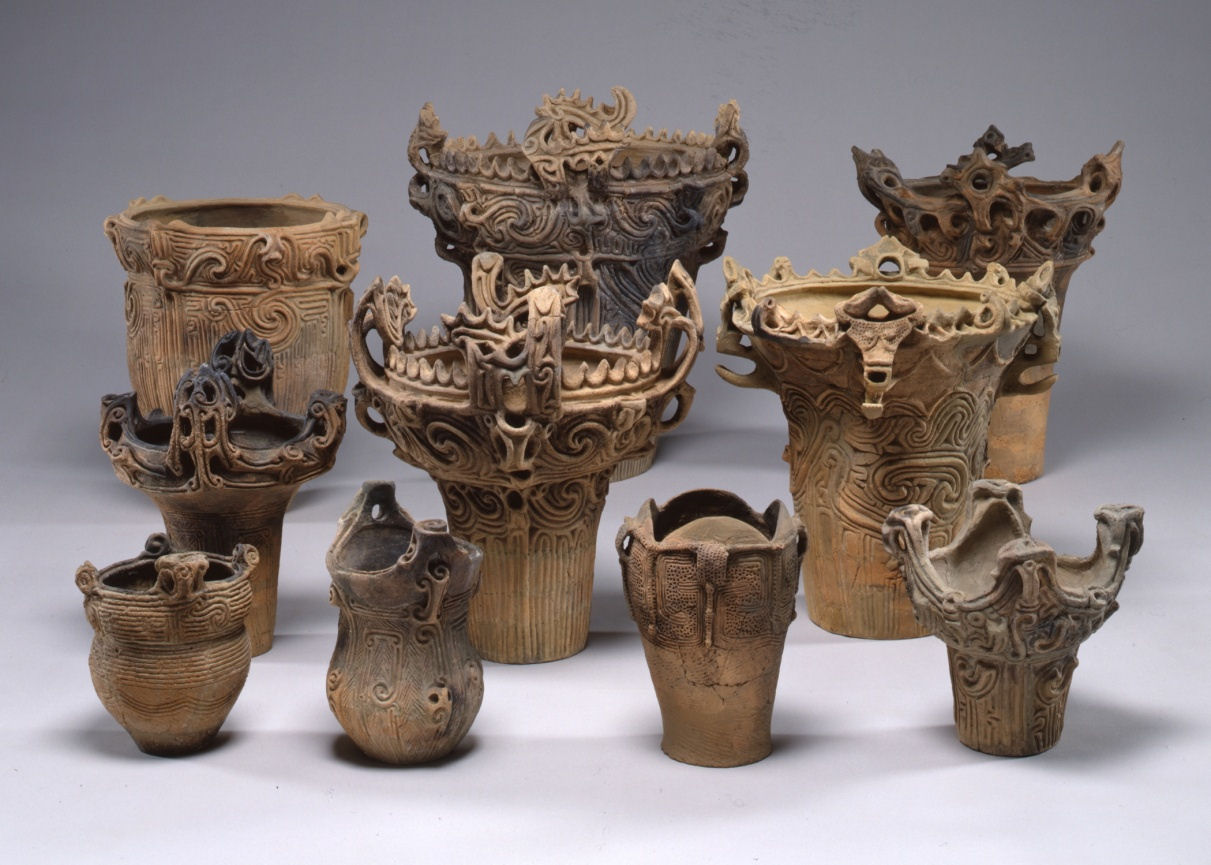
| Name | Zeitraum | Merkmale |
|---|---|---|
| Beginnende Jōmon-Zeit Jōmon I |
30.000–10.000 v. Chr. | Erste Nutzung von Keramik auf den japanischen Inseln |
| Frühste Jōmon-Zeit Jōmon II |
10.000–6000 v. Chr. | Erste Ton-Figuren. Jōmon-Kultur erreicht die Hauptinsel Honshū |
| Frühe Jōmon-Zeit Jōmon III |
6000–5000 v. Chr. | Die ersten größeren Siedlungen in der Jōmon-Kultur |
| Mittlere Jōmon-Zeit Jōmon IV |
5000–4000 v. Chr. | |
| Späte Jōmon-Zeit Jōmon V |
4000–3000 v. Chr. | |
| Ausgehende Jōmon-Zeit Jōmon VI |
3000–300 v. Chr. |



美尼斯是第一位将古埃及统一起来的统治者。他被视为于公元前3100年前创立了古埃及第一王朝。好比古罗马的罗慕路斯,美尼斯被视为古埃及历史的创建者。[1]
根据古埃及传说,将上下埃及统一成为一个中央集权国家的是一个名叫“美尼斯”的法老。[2]然而,这名字并没有在现存的王名表(开罗残片和巴勒莫石碑)上出现,这些残缺的王名表乃是刻于一块第五王朝的石碑上。作为埃及的第一个统治者,美尼斯是在较后期的史料上才出现的。根据曼涅托的《埃及史》(Aegyptiaca),古埃及起初是神的王朝,然后是神人和亡灵的王朝,接下来才是人的王朝,而在人王朝中,美尼斯就是第一位王。[3]
就第十九王朝(公元前13世纪)的两个王名表(阿拜多斯王名表及都灵王名表)而言,记载的名称为“美尼”(Meni),[4]而公元前3世纪的埃及历史学家曼涅托则称他为“美尼斯”;公元前5世纪的希腊历史学家希罗多德称第一位埃及法老为“米恩”(Min);[5]西西里的狄奥多罗斯则称之为米纳斯(Menas)。[4]美尼斯亦于希腊罗马时期出现于通俗小说中,可见他在后期被视为重要人物。[6]
美尼斯亦归功于建立了孟斐斯以作为埃及首都。[7]根据曼涅托,美尼斯在位共62年,最后他是被一头河马杀死的。[8]

 History
History
 C 4000 - 3000 BC
C 4000 - 3000 BC

 History
History
 B 5000 - 4000 BC
B 5000 - 4000 BC

 History
History
 D 3000 - 2500 BC
D 3000 - 2500 BC

 History
History
 E 2500 - 2000 BC
E 2500 - 2000 BC

 History
History
 F 2000 - 1500 BC
F 2000 - 1500 BC

 History
History
 G 1500 - 1000 BC
G 1500 - 1000 BC

 History
History
 H 1000 - 500 BC
H 1000 - 500 BC

 History
History
 I 500 - 0 BC
I 500 - 0 BC
 Iraq
Iraq
 Mesopotamian civilization
Mesopotamian civilization
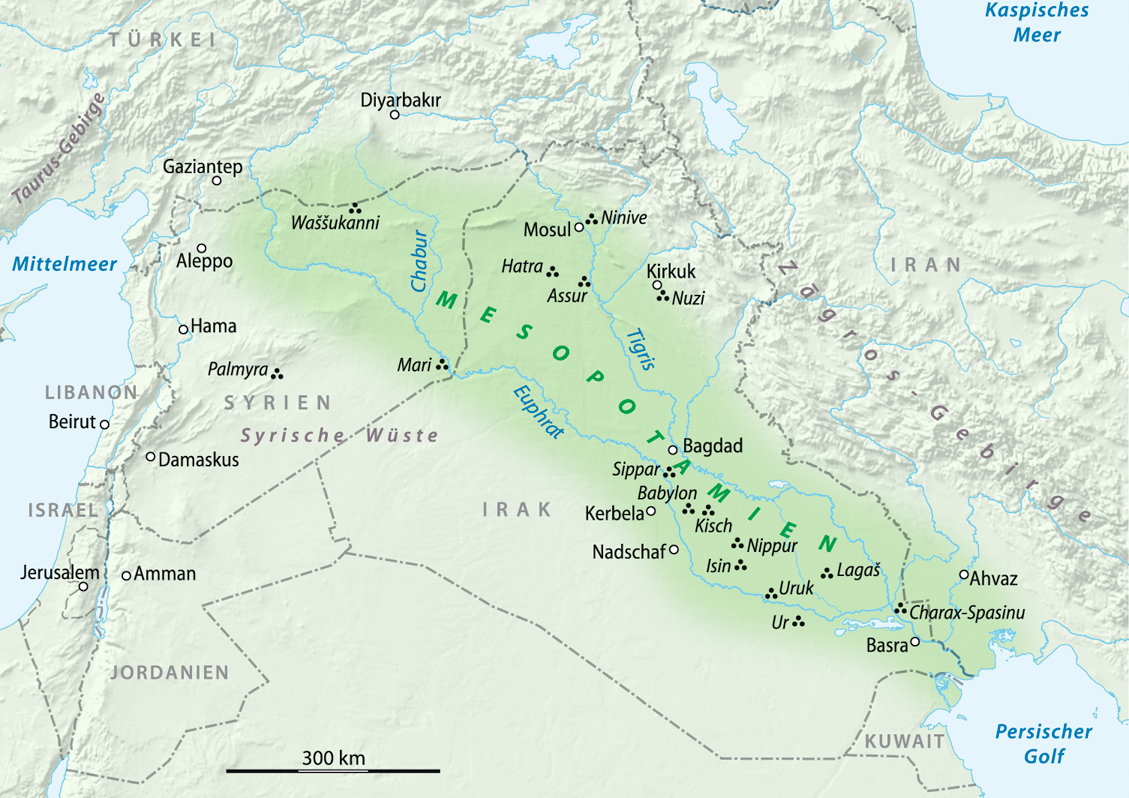
美索不达米亚(阿拉米语:ܒܝܬ ܢܗܪܝܢ,希腊语:Μεσοποταμία,阿拉伯语:بلاد الرافدين ,英语:Mesopotamia)是古希腊对两河流域的称谓,意为“(两条)河流之间的地方”[1],这两条河指的是幼发拉底河和底格里斯河,在两河之间的美索不达米亚平原上产生和发展的古文明称为两河文明或美索不达米亚文明,它大体位于现今的伊拉克,其存在时间从公元前6000年到公元前2世纪,是人类最早的文明。由于这两条河流每年的氾滥,所以下游土壤肥沃,富含有机物和矿物质,但同时该地气候干旱缺水,所以当地人公元前6000年就开始运用灌溉技术[2],灌溉为当地带来了大规模的人力协作和农业丰产。经过数千年的演化,美索不达米亚于公元前2900年左右形成成熟文字、众多城市及周围的农业社会[3]。
由于美索不达米亚地处平原,而且周围缺少天然屏障,所以在几千年的历史中有多个民族在此经历了接触、入侵、融合的过程,苏美尔人、阿卡德人、阿摩利人、亚述人、埃兰人、喀西特人、胡里特人、迦勒底人等其他民族先后进入美索不达米亚,他们先经历了史前的欧贝德、早期的乌鲁克、苏美尔和阿卡德时代、古提王朝、新苏美尔时期的拉格什第二王朝、乌鲁克和乌尔第三王朝、后来又建立起先进的古巴比伦、庞大的亚述帝国。迦勒底人建立的新巴比伦将美索不达米亚古文明推向鼎盛时期。但随着波斯人和希腊人的先后崛起和征服,已经辉煌了几千年的文字和城市逐步被荒废,接着渐渐为沙尘掩埋,最后被人们所遗忘。直到19世纪中期,伴随考古发掘的开始和亚述学的兴起,越来越多的实物被出土,同时楔形文字逐渐被破解,尘封了18个世纪的美索不达米亚古文明才慢慢呈现在当今世人面前。
苏美尔人于公元前3200年左右发明的楔形文字[4]、公元前2100年左右尼普尔的书吏学校[5]、三四千年前苏美尔人和巴比伦人的文学作品[6]、2600多年前藏有2.4万块泥板书的亚述巴尼拔图书馆[7]、有前言和后记及282条条文构成的《汉谟拉比法典》[8]、有重达30多吨的人面带翼神兽守卫的亚述君王宫殿、古巴比伦人关于三角的代数的运算、公元前747年巴比伦人对日蚀和月蚀的准确预测[9]、用琉璃砖装饰的新巴比伦城和传说中的巴别塔和巴比伦空中花园,以及各时期的雕塑和艺术品,这些成就都属于美索不达米亚这个古老的文明。
Mesopotamien oder Zweistromland (altgriechisch Μεσοποταμία Mesopotamia; aramäisch ܒܬ ܢܗܪܝܢ Beth Nahrin; arabisch بلاد الرافدين, DMG Bilād ar-rāfidain; persisch میان رودان Miyān roodan; kurdisch/türkisch Mezopotamya) bezeichnet die Kulturlandschaft in Vorderasien, die durch die großen Flusssysteme des Euphrat und Tigris geprägt wird.
Zusammen mit Anatolien, der Levante im engeren Sinne und dem Industal gehört es zu den wichtigen kulturellen Entwicklungszentren des Alten Orients. Mit der Levante bildet es einen großen Teil des sogenannten Fruchtbaren Halbmonds, in welchem sich Menschen erstmals dauerhaft niederließen. Es entwickelten sich Stadtstaaten, Königreiche – Neuerungen für die Menschheit mit den Erfindungen der Schrift, der ersten Rechtsordnung, der ersten Menschheitshymnen, des Ziegelsteins, des Streitwagens, des Biers und der Keramik: Evolutionen in der Stadtentwicklung, Kultur- und Technikgeschichte. Im Süden mit den Sumerern, durchsetzt von gutäischen Königsdynastien, entwickelte sich die erste Hochkultur der Menschheitsgeschichte. Ihnen folgten die Akkader, Babylonier, im Norden das Königreich Mittani, in Mittelmesopotamien die Assyrer, dann das medische Königreich, welches das assyrische Großreich in einer Union mit den Babyloniern eroberte. Die Meder hatten fast 200 Jahre ein Großreich inne, ehe mit den Persern erstmals eine außerhalb Mesopotamiens entstandene Kultur dauerhafte Kontrolle über die Region erlangte. Auf die Perser folgten die Makedonier, Parther, Sassaniden, Araber und schließlich die Osmanen, deren Herrschaft im 17. Jahrhundert durch die persischen Safawiden kurzzeitig unterbrochen wurde.
Das vor allem in seiner Wasserverfügbarkeit höchst unterschiedliche Land bot den dort lebenden Menschen zu allen Zeiten höchst unterschiedliche Siedlungsvoraussetzungen, die massiven Einfluss auf die historische Entwicklung nahmen.
メソポタミア(ギリシャ語: Μεσοποταμία、ラテン文字転写: Mesopotamia、ギリシャ語で「複数の河の間」)は、チグリス川とユーフラテス川の間の沖積平野である。現在のイラクの一部にあたる。
古代メソポタミア文明は、メソポタミアに生まれた複数の文明を総称する呼び名で、世界最古の文明であるとされてきた。文明初期の中心となったのは民族系統が不明のシュメール人である。
地域的に、北部がアッシリア、南部がバビロニアで、バビロニアのうち北部バビロニアがアッカド、下流地域の南部バビロニアがシュメールとさらに分けられる。南部の下流域であるシュメールから、上流の北部に向かって文明が広がっていった。土地が非常に肥沃で、数々の勢力の基盤となったが、森林伐採の過多などで、上流の塩気の強い土が流れてくるようになり、農地として使えない砂漠化が起きた。
古代メソポタミアは、多くの民族の興亡の歴史である。 例えば、シュメール、バビロニア(首都バビロン)、アッシリア、アッカド(ムロデ王国の四つの都市のひとつ)、ヒッタイト、ミタンニ、エラム、古代ペルシャ人の国々があった。古代メソポタミア文明は、紀元前4世紀、アレクサンドロス3世(大王)の遠征によってその終息をむかえヘレニズムの世界の一部となる。
Mesopotamia (Greek: Μεσοποταμία) is a historical region of Western Asia situated within the Tigris–Euphrates river system, in the northern part of the Fertile Crescent, in modern days roughly corresponding to most of Iraq, Kuwait, the eastern parts of Syria, Southeastern Turkey, and regions along the Turkish–Syrian and Iran–Iraq borders.[1]
The Sumerians and Akkadians (including Assyrians and Babylonians) dominated Mesopotamia from the beginning of written history (c. 3100 BC) to the fall of Babylon in 539 BC, when it was conquered by the Achaemenid Empire. It fell to Alexander the Great in 332 BC, and after his death, it became part of the Greek Seleucid Empire.
Around 150 BC, Mesopotamia was under the control of the Parthian Empire. Mesopotamia became a battleground between the Romans and Parthians, with western parts of Mesopotamia coming under ephemeral Roman control. In AD 226, the eastern regions of Mesopotamia fell to the Sassanid Persians. The division of Mesopotamia between Roman (Byzantine from AD 395) and Sassanid Empires lasted until the 7th century Muslim conquest of Persia of the Sasanian Empire and Muslim conquest of the Levant from Byzantines. A number of primarily neo-Assyrian and Christian native Mesopotamian states existed between the 1st century BC and 3rd century AD, including Adiabene, Osroene, and Hatra.
Mesopotamia is the site of the earliest developments of the Neolithic Revolution from around 10,000 BC. It has been identified as having "inspired some of the most important developments in human history, including the invention of the wheel, the planting of the first cereal crops, and the development of cursive script, mathematics, astronomy, and agriculture".[2]
La Mésopotamie (du grec Μεσοποταμία / Mesopotamía, de μέσος / mésos, « entre, au milieu de », et ποταμός / potamós, « fleuves », littéralement le pays « entre les fleuves ») est une région historique du Moyen-Orient située entre le Tigre et l'Euphrate. Elle correspond pour sa plus grande part à l'Irak actuel.
Elle comprend deux régions topographiques distinctes : d'une part, au nord (nord-est de la Syrie et le nord de l'Irak actuel), une région de plateaux, celle-ci étant une zone de cultures pluviales et, d'autre part, au sud, une région de plaines où se pratique une agriculture reposant exclusivement sur l'irrigation.
L'ensemble des historiens et des archéologues contemporains s'accordent à dire que les Mésopotamiens sont à l'origine du premier système d'écriture créé vers 3400-3300 av. J.-C. Celui-ci évolua pour donner naissance à l'écriture « cunéiforme » (du latin cuneus, le « coin »).
Actuellement, le terme « Mésopotamie » est généralement utilisé en référence à l'histoire antique de cette région, pour la civilisation ayant occupé cet espace jusqu'aux derniers siècles avant l'ère chrétienne ou au VIIe siècle, plus exactement en 637 ap. J.-C. avec la conquête des Arabes musulmans.
La Mesopotamia (dal greco Μεσοποταμία/Mesopotamía, comp. di μέσος-/mésos- 'centrale, che sta in mezzo', ποταμός/potamós 'fiume' e il suff. -ia 'terra, landa, Paese'; cioè 'terra fra i fiumi Tigri ed Eufrate') denota una regione storica del Vicino Oriente, parte della cosiddetta Mezzaluna Fertile.
La Mesopotamia fu conquistata prima dai Sumeri, poi dagli Accadi, dai Gutei, dagli Amorrei (????????, Martu in sumerico), dai Babilonesi, dai Cassiti, dagli Assiri e dai Persiani.
Con il termine Mesopotamia i Greci intendevano la zona settentrionale che si estende tra il Tigri e l'Eufrate. Con il tempo l'uso di questa definizione divenne di più ampio respiro, fino a comprendere anche le zone limitrofe. Oggi possiamo impropriamente definirne i confini indicandoli con la catena dei monti Zagros a est, quella del Tauro a nord, steppe e deserti a ovest e sud-ovest e, infine, il Golfo Persico a sud (la zona paludosa dello Shatt al-'Arab). Nella suddivisione territoriale odierna corrisponde quindi ai territori dell'Iraq, e a parte di territori di Turchia, Siria, Iran, Arabia Saudita e Kuwait. La regione era considerata uno dei corni della mezzaluna fertile e vi si trovavano, allo stato selvatico, quelli che sarebbero diventati gli alimenti base della dieta dell'uomo nell'antichità: cereali, leguminose, ovini e bovini.
Foreste di tipo mediterraneo sulle montagne a nord ospitavano una flora di querce, pini, cedri e ginepri e una fauna di animali selvatici quali leopardi, leoni e cervi che ritroviamo anche nell'iconografia dell'arte giunta fino a noi. Da questa catena montuosa, il Tauro, parte il percorso dei due fiumi, molto importante per la popolazione. Difatti ha influito molto sulla vita e mentalità dei popoli che l'abitavano: sorgendo in una catena montuosa a clima mediterraneo, entrambi i fiumi erano soggetti a una portata variabile e a improvvise e disastrose inondazioni, tanto che nel corso dei millenni più volte hanno cambiato il corso del proprio letto. Proseguendo verso sud, i due fiumi si gettavano nel golfo con estuari separati ma, con il passare del tempo, costituirono la regione paludosa dello Shatt al-'Arab unendo il proprio percorso.
Mesopotamia (del Mesopotamia ‘tierra entre dos ríos’, árabe bilād al-rāfidayn, traducción del persa antiguo Miyanrudan ‘la tierra entre ríos’, o del siríaco ܒܝܬ ܢܗܪܝܢ beth nahrin ‘entre dos ríos’) es el nombre por el cual se conoce a la zona del Oriente Próximo ubicada entre los ríos Tigris y Éufrates, si bien se extiende a las zonas fértiles contiguas a la franja entre ambos ríos, y que coincide aproximadamente con las áreas no desérticas del actual Irak y la zona limítrofe del norte-este de Siria.
El término alude principalmente a esta zona en la Edad Antigua que se dividía en Asiria (al norte) y Babilonia (al sur). Babilonia (también conocida como Caldea), a su vez, se dividía en Acadia (parte alta) y Caldea (parte baja).1 Sus gobernantes eran llamados patesi.
Los nombres de ciudades como Ur o Nippur, de héroes legendarios como Gilgameš, del Código Hammurabi, de los asombrosos edificios conocidos como zigurats, provienen de la Mesopotamia Antigua. Y episodios mencionados en la Biblia o en la Torá, como los del diluvio universal o la leyenda de la Torre de Babel, aluden a hechos ocurridos en esta zona.
La historia de la Mesopotamia está dividida en 5 etapas: Periodo Sumerio, Imperio Acadio, Imperio Babilónico, Imperio Asirio e Imperio Neobabilónico.
El sistema social estaba ligado a la economía, por lo que no había castas ni estratificación, solo diferenciación en las posiciones económicas.
Месопота́мия (др.-греч. Μεσοποταμία; араб. الجزيرة, Эль-Джезира[1], или араб. ما بين النهرين, Ма-Байн-эн-Нахрайн[1]; арам. ܒܝܬ ܢܗܪܝܢ, тур. Mezopotamya) — историко-географический регион на Ближнем Востоке, расположенный в долине двух рек — Тигра и Евфрата, в зоне Плодородного полумесяца; место существования одной из древнейших цивилизаций в истории человечества. В научной литературе встречаются альтернативные обозначения региона — Двуречье и Междуречье, в которые вкладывается различный смысл.
Современные государства, включающие земли Месопотамии, — Ирак, северо-восточная Сирия, периферийно Турция и Иран.
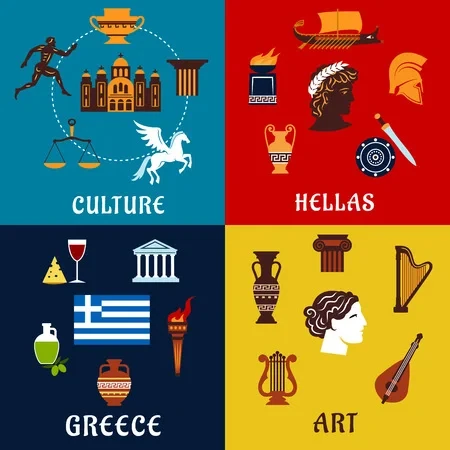 History of Ancient Greece
History of Ancient Greece